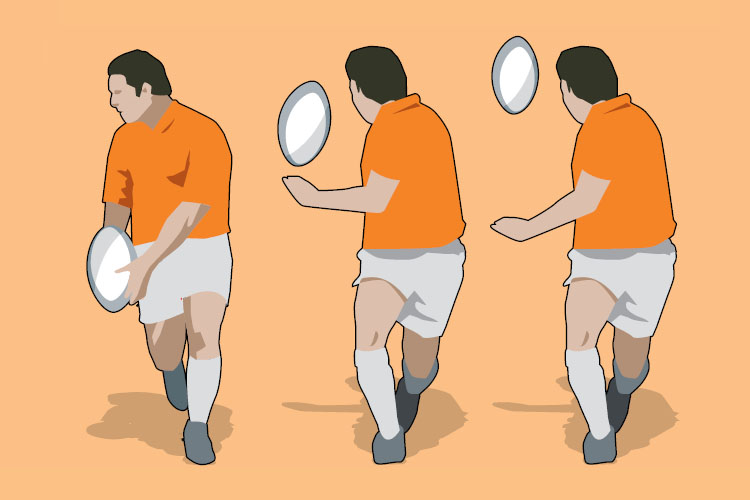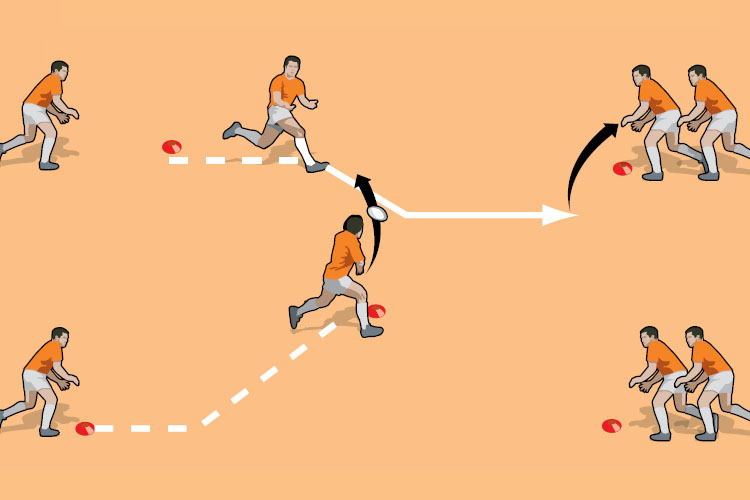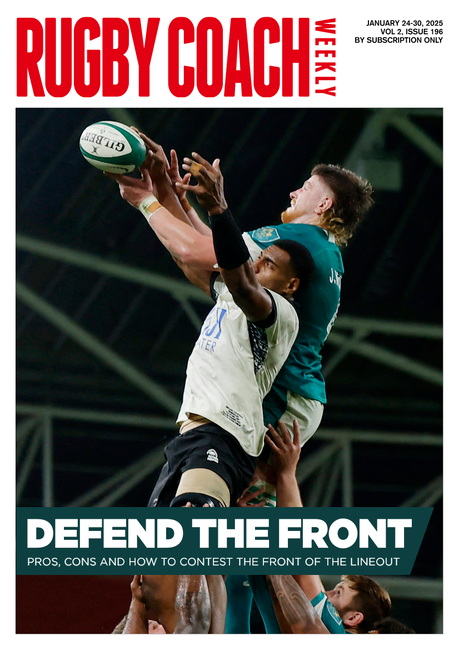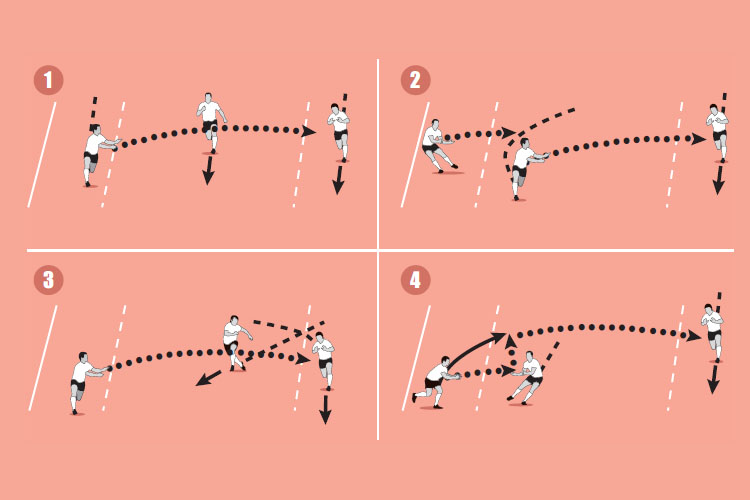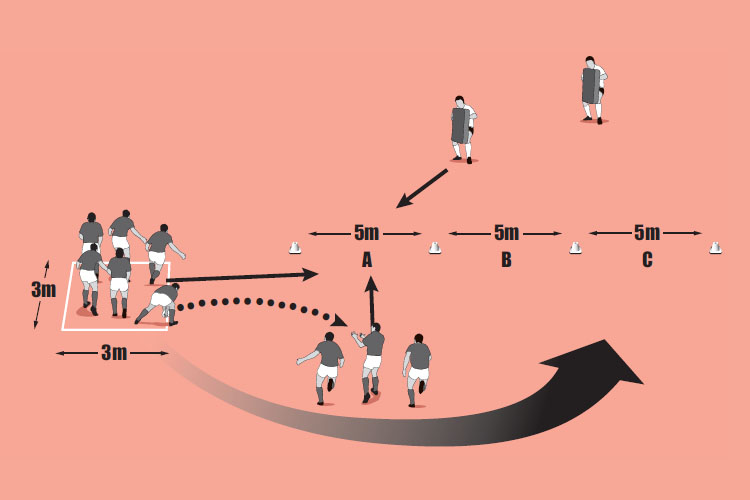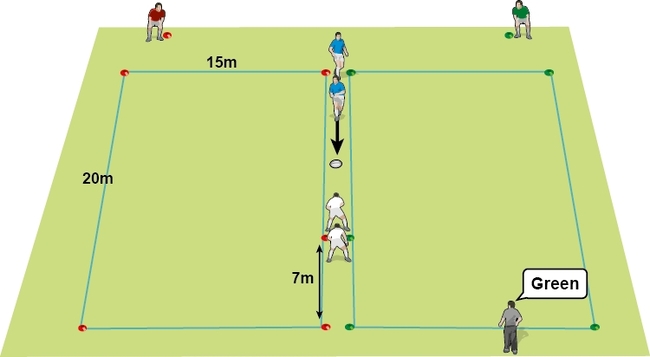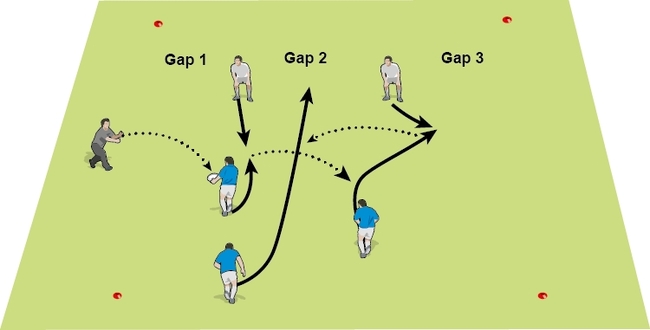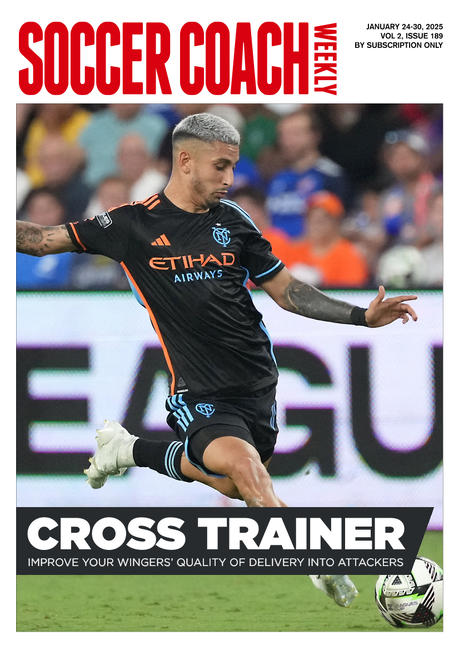Pop play
Though the pop pass is short, it still needs timing and accuracy. As a basic skill, all players should be able to draw a defender and deliver a pop pass into space for a support runner to accelerate onto. “Pop play” will help your players develop not only the technique but also their awareness of when to give a pop pass.
Warm up time: 7-10
Session time: 8-10
Development time: 15-20
Game time: 15-20
Warm down time: 7-10
What to think about
Players need to have a good understanding of what a good pop pass should look and feel like. For instance, the sensation that the ball is flicked up off the finger tips to about chest height. The pass should be straight up rather than sideways or backwards, and should be easy for the support runner to accelerate onto. Once players know what an effective pop pass looks like they can self and peer assess their own and their team mates passing during training. Often this has more impact on them than you constantly telling them what they should be doing and how to do it.set-up
- Pop the ball straight up off the fingertips.
- Give the ball lots of hang time in the air.
- Accelerate onto the ball.
- Pull the defender out of position to create space.
What you get your players to do
Split into pairs, with each pair on an adjacent corner of the box. Have one ball carrier run straight across the box, before cutting back inside. At the same time his partner starts from the other corner. The ball carrier gives a pop pass to his partner in the middle of the box. Use a cone to show where the pass should be delivered. The player pops the ball to the next pair, who repeat the exercise. The support player can choose to take a switch pass if he wants.Development
In a larger box, add defenders into the exercise (as the bottom picture). Initially the defender follows the ball carrier as he cuts across the box. Then allow the defender to choose whether to follow the ball carrier or take the support player.Related Files
Game situation
Split into two teams of seven players and play a full contact game. Identify two “runners” on the attacking team, who must start behind the rest of the attacking line. Start the game with a pass in the centre of the pitch with the defence starting 5 metres back. The attacking team score 2 points every time they get one of their “runners” through the defence to score. A try by any other player is worth 1 point. Defenders can only make one-on one tackles. If the ball cannot be offloaded the attack finishes and the game restarts. One team attacks 5 times then they swap over.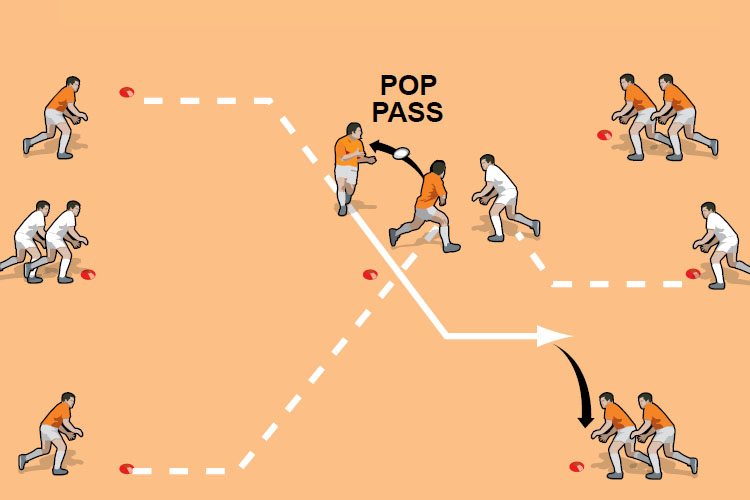
What to call out
- “Soft hands to deliver the pass”
- “Catch the ball in front of your chest”
- “Straighten up after receiving the pass”
- “Pass for the support not to the support”
Newsletter Sign Up
Coaches Testimonials

Gerald Kearney, Downtown Las Vegas Soccer Club

Paul Butler, Florida, USA

Rick Shields, Springboro, USA

Tony Green, Pierrefonds Titans, Quebec, Canada
Subscribe Today
Be a more effective, more successful rugby coach
In a recent survey 89% of subscribers said Rugby Coach Weekly makes them more confident, 91% said Rugby Coach Weekly makes them a more effective coach and 93% said Rugby Coach Weekly makes them more inspired.
Get Weekly Inspiration
All the latest techniques and approaches
Rugby Coach Weekly offers proven and easy to use rugby drills, coaching sessions, practice plans, small-sided games, warm-ups, training tips and advice.
We've been at the cutting edge of rugby coaching since we launched in 2005, creating resources for the grassroots youth coach, following best practice from around the world and insights from the professional game.
